Our Research Team

POST-DOC FELLOW
Ahmed Sewify
Read Bio
“Automatic Advanced Ultrasound Imaging-Based Tomographic Dynamic Tracking of Shoulder Bony Structures”.
Ahmed is currently undertaking his PhD within the Training Centre, based at QUT’s Faculty of Health.
Ahmed graduated with a Master of Engineering (Electrical) and Bachelor of Engineering (Honours) (Mechatronics) from QUT. He has real-world experience as a Mechatronics Engineer at five different companies (BiVACOR, AOS, KIW, QUT and Netaware) working on task automation, computer vision, AutoCAD, GUI designs, web development and product design. His current project is focused on improving the availability, quality and understanding of 3D physical body structures, in particular the shoulder, by reconstructing 3D ultrasound images directly from raw channel transducer array data. Ahmed hopes to employ ultrasound imaging in a way that revolutionizes existing medical imaging techniques, increasing their field of view, speed, safety and dynamism.
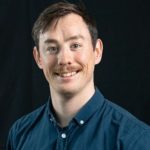
POST-DOC FELLOW
Dermot O’Rourke
Read Bio
Dr Dermot O’Rourke has started as a Post-doctoral Fellow in Program 1 and brings expertise in orthopaedic biomechanics, primarily focused on the biomechanics of diseased and implanted bones. He received his PhD at Flinders University during which he developed computational tools for population-based studies of acetabular components in total hip replacement. Since, he has developed computer methods to quantify changes in hip BMD and strength in exercise, used statistical shape models to investigate the relationship between knee shape and motion, and used advanced experimental techniques to examine the contribution of ligaments to the mechanics of healthy and implanted knees. Dermot is based at Gardens Point campus of QUT.
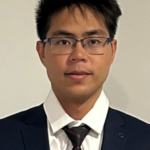
POST-DOC FELLOW
Eric Su
Read Bio
Mr. Eric Yung-Sheng Su is a near-completion PhD candidate in Sports Biomechanics at UQ. His PhD research aims at understanding how human interacts with external constraints to maximize power output within limits imposed in the dynamic tasks. His research techniques involve 3D marker-based and markerless motion capture technology, computer simulation and modelling, and surface electromyography. He recently joins QUT as a post-doctoral research fellow with the School of Exercise and Nutrition Sciences. Mr. Eric Yung-Sheng Su is looking forward to undertaking research into upper limb motor control mechanism related to proprioceptive feedback control and illusive kinaesthetic. His research might also involve collaborative effort within the Centre or the School.
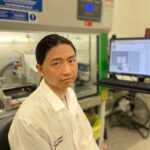
POST-DOC FELLOW
Guanyu Lai
Read Bio
Guanyu Lai obtained his PhD in Materials Science and Engineering from Monash University in 2023, with a specialisation in hydrogel-based polymeric biomaterials for 3D bioprinting of biomimetic constructs. His research focuses on developing mechanically and rheologically tuneable polymeric materials that can form complex structures, with applications in tissue engineering and regenerative medicine. His work aims to bridge the gap between material science and biomedical engineering for improved healthcare solutions.
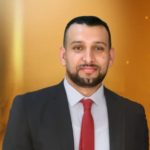
POST-DOC FELLOW
Laith Alzubaidi
Read Bio
Laith Alzubaidi is currently a postdoctoral researcher in the School of Mechanical, Medical, and Process Engineering.
He is currently also a Ph.D. candidate in his last year in the field of medical imaging analysis with deep learning at the Queensland University of Technology (QUT) in Brisbane, Australia. He holds a master’s degree in computer science from the University of Missouri (2016), USA. He has been awarded two scholarships: the Prime Minister of Iraq’s Outstanding Students Scholarship, received during his master’s degree, and a second scholarship awarded by the QUT for his Ph.D. He has published more than 40 refereed research papers. He is collaborating with other researchers around the world including USA, UK, Spain, Australia, and Malaysia, leading to more than 25 joint research publications.
He reviews papers for multiple journals more than 40 journals including PLoS ONE, IEEE Transactions on Medical Imaging, and Cancers MDPI, etc. He has been chosen by a journal of electronics as a guest editor. For more about Laith’s publications and interests, please follow the link: https://scholar.google.com/citations?user=TqoZSacAAAAJ&hl=en
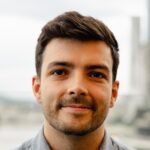
POST-DOC FELLOW
Max Lavaill
Read Bio
“Investigation on patient-specific features of shoulder MSK modelling. Study of an MRI-based EMG-driven model.”
Max completed his PhD through the ARCITTC-JB at QUASR/QUT in 2023 and has since been appointed to a postdoctoral fellowship position to continue his work on the analysis of soft tissues actions implied in shoulder stability and motion. he works with computational modelling as well as human kinematics and EMG recordings as key tools for his research. His research focuses on studying the influence of patient-specific modelling features on the joint simulations. As part of the work in Program 1 he continues to supervise and support several of our PhD students at the centre.
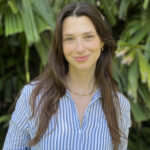
POST-DOC FELLOW
Natalia Mühl Castoldi
Read Bio
Our Affiliate Researchers

AFFILIATE (CLINICAL)
Dr. Anand Ashok Kumar
Read Bio
Dr. Anand Ashok Kumar is an accomplished orthopaedic surgeon specialising in shoulder surgery. He chose the prestigious Brisbane Shoulder Fellowship to refine his expertise under the guidance of renowned surgeons Dr. Cutbush and Dr. Gupta. With extensive academic qualifications—including an M.B.B.S. from K.J. Somaiya Medical College, an M.D. in Pharmacology, and an M.S. in Orthopaedics — Dr. Kumar has also completed a fellowship in Arthroscopy and Sports Medicine. His current fellowship provides invaluable surgical experience, mentorship, and exposure to cutting-edge techniques, equipping him to become a leader in academic medicine and private practice. His ultimate goal is to advance patient care in shoulder surgery.
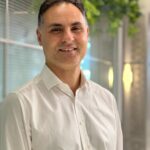
Affiliate (Clinical)
Dr. Deniz Erbulut
Read Bio
Deniz received his PhD in Mechanical Engineering from the University of Melbourne in 2010. After faculty appointments in the USA and Turkey, he joined Herston Biofabrication Institute as a senior research fellow in 2020. He has been collaborating with research groups at UQ and QUT (QUASR) on several orthopaedic biomechanics related projects as a principle investigator since 2020. Deniz has about 10+ years of research experience in biomechanics for understanding clinically relevant issues in medicine. Using a combination of experimental and computational tools, he performs research in in-vivo/in vitro joint mechanics, human motion, musculoskeletal modelling, computational biomechanics and spinal/orthopaedic implant development
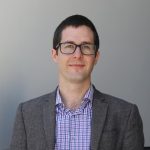
INVESTIGATING TEAM
Edmund Pickering
Read Bio
Edmund’s background is in mechanical engineering, where he brings a wealth of experience in finite element modelling. Edmund’s research is in the field of mechano-adaption where he focuses on using highly automated numerical models to explore the link between load and the adaptive response in bone. Edmund is a member of the Biomechanics and Spine research group at the Queensland University of Technology.
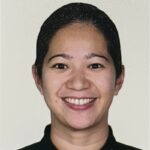
Affiliate (Clinical)
Dr. Kristine Italia
Read Bio
Dr Kristine Italia joined the Brisbane Shoulder Fellowship from June 2018 to August 2019, to gain her shoulder sub-speciality training under the guidance of Assoc. Prof Kenneth Cutbush and Prof (Adj) Ashish Gupta. Kristine worked on various clinical and biomechanical research projects and remains an active member of the Queensland Unit for Advanced Shoulder Research (QUASR). She returned to the Philippines to work as an Orthopedic Surgeon at St Luke’s Medical Centre and is also a part of medical start up Akunah.
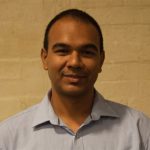
Investigating Team
Dr Jashint Maharaj
Read Bio
Jashint is a clinical researcher with interest in Orthopaedic shoulder bio- and pathomechanics. He has a background in Medicine, Public Health and Clinical Education, and looks to further his interest in orthopaedic research. He is also the Research Co-ordinator of QUASR’s transdisciplinary team.
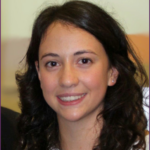
AFFILIATE (CLINICAL)
Dr Noemi Zaffaroni
Read Bio
Dr. Noemi Zaffaroni is an orthopaedic surgeon with a keen focus on sports medicine, shoulder arthroscopy, and arthroplasty. After earning her medical degree from the University of Milan in 2018, she continued her orthopaedic training at the University of Trieste, Italy. Passionate about refining her surgical expertise, she is honored to undertake a fellowship under the mentorship of Prof. Kenneth Cutbush and Prof. Ashish Gupta. Through this experience, she aims to expand her knowledge, contribute to clinical research, and drive innovation in shoulder surgery.

Research Assistant
Dr. Sarah Whitehouse
Read Bio
Dr Sarah completed a PhD in Outcomes in Orthopaedic Surgery in Bristol, UK in 2000 after a first degree in Applied Statistics. She has been working in Orthopaedic Research for almost 30 years both in the UK and Australia, being based in Brisbane for the since 2001. She collaborates internationally, regarding statistical analysis and methodological development, as well as project management and development from project inception to publication and dissemination.
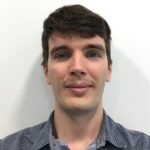
Research Assistant
Mr Tristan Shukar
Read Bio
Tristan has worked in both clinical and pre-clinical research, with a focus on intensive care, cardio-thoracic medicine, and orthopaedic surgery. He has experience in large, team based, studies and combines his laboratory research with administrative experience in international multi-centre observational cohort studies. He is currently expanding his research experience in Australia, looking to improve outcomes for orthopaedic surgery patients.
Operations Team
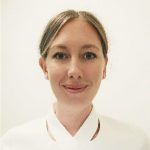
School Manager
Maddie McIntyre
Read Bio
Maddie is a biomedical engineer with extensive experience in managing business and operations in the medical technology sector. She is passionate about supporting the development of personalized medical technologies and facilitating their effective integration in the clinical setting. In her role as Centre Manager, Maddie guides the multidisciplinary team from academic, clinical and industry partners to reach the strategic goals of the Centre.
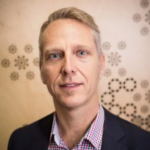
DEPUTY CENTRE DIRECTOR
Prof Peter Pivonka
Read Bio
Peter leads biomechanics research across the Faculty of Science and Engineering at QUT with a focus on transdisciplinary musculoskeletal research. His interests are in mechanobiology, multiscale modelling and bioengineering. He is the Chair of QUT Biomedical Engineering and also serves as the President of the Australia New Zealand Society of Biomechanics.

CENTRE MANAGER
Rosa Armitage
Read Bio
Rosa is an experienced research administration officer working in the higher education sector since 2013, with over 4 years’ experience working with academics and HDR students in the engineering and medical fields. With a background in science and education, she is passionate about facilitating the development and training of HDR students and supporting innovative research outcomes that make a real-world impact.

CENTRE ADMINISTRATION OFFICER (INTERN)
Vithusaya Manogar
Read Bio
Vithusaya is currently in her fourth year at QUT, where she is pursuing a Bachelor of Engineering (Aerospace) and a Bachelor of Business (Management). V is passionate about gaining hands-on experience, she is eager to apply her skills in administration, marketing, and communications while deepening her understanding of business operations. During her time at the Centre, V will contribute to a range of activities including outreach initiatives and social media engagement while also supporting Centre training and events. As an aspiring engineering entrepreneur, V is set to learn some valuable foundational skills to launch her into her future engineering career.
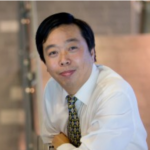
Centre Director
Prof YuanTong Gu
Read Bio
YuanTong leads a large research group in mechanical engineering with particular focus on nanotechnology and nanodevices. He is an expert in advanced experimental and numerical computational modelling for biomechanics. He is an ARC Future Fellow.
Alumni
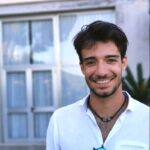
AFFILIATE (MASTERS)
Andrea Sgarzi
Read Bio
An efficient method to predict hip fragility fractures in virtual cohorts for In Silico Trials
Mr Andrea Sgarzi is an ARC ITTC for Joint Biomechanics MSc student in Biomedical Engineering from the University of Bologna under the main supervision of A/Prof Saulo Martelli. Andrea’s research is focused on the experimental and computational branches of human movement biomechanics.
During the past year, Andrea has developed a particular interest in using finite element (FE) analysis to study bone mechanics, which forms the basis of his final thesis and work with the centre, which he has developed in his last 6 months with the centre. He presents his final thesis entitled ‘An efficient method to predict hip fragility fractures in virtual cohorts for In Silico Trials’ using computational models for hip fracture prediction.
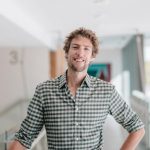
Post-doc Fellow
Bart Bolsterlee
Read Bio
Dr Bart Bolsterlee is a mechanical and biomedical engineer with specific expertise in imaging and biomechanical modelling of the human musculoskeletal system. During his PhD he developed and evaluated tools for computational modelling of the human upper limb. As a postdoctoral researcher at NeuRA, he pioneered methods to reconstruct and quantify the three-dimensional architecture of human skeletal muscles from magnetic resonance and diffusion tensor imaging data.
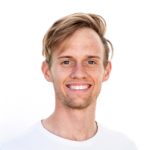
Investigating Team
Brandon Ziegenfuss
Read Bio
Brandon is a biomedical science and public health graduate from the University of Queensland. Although his current research primarily focusses on the biomechanics of various shoulder fixation techniques, he is also involved in a perception study which aims to realise the opinions of health professionals regarding the efficacy of shoulder surgery.
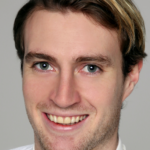
AFFILIATE (CLINICAL)
Dr. Chris Child
Read Bio
Christopher is a native of Munich, Germany, earned his primary medical degree and doctorate from Heidelberg University in Germany in 2016. Following this, he successfully completed his orthopaedic and trauma surgery program in Switzerland in 2023. Throughout his training, he acquired valuable experience at the University Hospital Zurich, Cantonal Hospital Frauenfeld, and the Schulthess Clinic in Zurich, where he also served as a Junior Consultant.
Currently, Christopher is honoured and grateful to be an ASRI Fellow under the mentorship of Prof Kenneth Cutbush and Prof Ashish Gupta. He aspires to further advance his skills in arthroscopy and arthroplasty surgery during this fellowship.
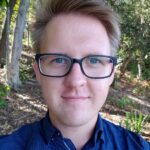
AFFILIATE PHD
Corey Miller
Read Bio
Corey studied a Bachelor of Medical Engineering at QUT and graduated in 2019 with First Class Honours. In 2020 he started a PhD in Biomechanical Engineering, investigating cortical bone’s adaptive response to mechanical loading and drug therapies in the mouse tibia model and developing a novel simulation platform to predict this response by combining beam theory mechanics with cell population dynamics. This project has helped developed his knowledge and skills in mechanical engineering within the context of human anatomy and biology, as well as computational programming with a focus on modelling and simulation. His work has been presented at conferences held in Australia and Europe, including the 11th Clare Valley Bone Meeting (2020) and the 26th Congress of European Society of Biomechanics (2021), and has been published in the journal Frontiers in Bioengineering and Biotechnology.
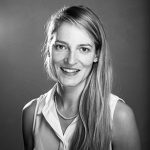
POST-DOC FELLOW
Eleonore Bolle
Read Bio
Eleonore Bolle is a mechanical engineer by education with added expertise in tissue culture. She is currently a postdoctoral researcher in the School of Chemical Engineering at the University of Queensland. Prior to joining the University of Queensland she undertook a Ph.D. in Tissue Engineering at the Queensland University of Technology. Her research interests lie in additive manufacturing techniques, biomaterials, drug delivery and the development of 3-dimensional tissue models. Specifically, her current research focusses on using novel biomaterials and additive manufacturing techniques to restore and maintain tendon function.
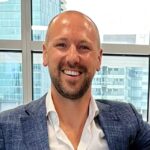
Affiliate (Clinical)
Dr. Freek Hollman
Read Bio
Dr Freek Hollman is a clinical fellow with the Brisbane Shoulder Fellowship working under the guidance of Assoc. Prof Kenneth Cutbush (St Andrew’s War Memorial Hospital) and Prof (Adj) Ashish Gupta (Greenslopes Private Hospital). The fellowship provides comprehensive training in both arthroscopy and arthroplasty techniques. Freek is also engaged in several research projects at QUT through the Queensland Unit for Advanced Shoulder Research (QUASR) including the application of deep learning and artificial intelligence to shoulder treatment planning and outcome prediction, tissue quality assessment of the rotator cuff, and evaluation of shoulder instability. After completing the fellowship, Freek will return to the Netherlands to work as an Orthopaedic Surgeon at the VieCuri Medical Centre in Venlo.
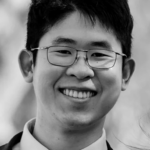
AFFILIATE (CLINICAL)
Dr. Hean Wu Kang
Read Bio
Dr Kang joins Ken and Ashish as part of their surgical fellow program, commencing August 7th.
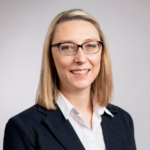
Affiliate (Clinical)
Dr. Helen Ingoe
Read Bio
Dr Helen Ingoe is a clinical fellow with the Brisbane Shoulder Fellowship working under the guidance of Assoc. Prof Kenneth Cutbush (St Andrew’s War Memorial Hospital) and Prof (Adj) Ashish Gupta (Greenslopes Private Hospital). Helen joins us from the University of Otago where she most recently completed a research fellowship after completing her formal studies (MD) at the Hull York Medical School.
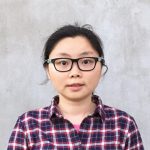
POST-DOC FELLOW
Jing Peng
Read Bio
Dr. Jing Peng works as a Research Fellow in Robotic Surgery within Program 2. Her research interests include computer vision, machine learning, robotics and pneumatic control. Jing completed her BEng in Measurement, Control Technology and Instruments and her PhD in Mechanical Engineering at Tsinghua University. During her PhD studies, she also carried out research in Mechanical and Manufacturing Engineering at the University of New South Wales as a Professional Practicum student. After graduation from Tsinghua University she worked at the University of Hong Kong as a Post-doctoral Fellow in Surgical Robotics and Soft Robotics. In 2019 she joined QUT as a Postdoctoral Research Fellow in Design Robotics for Advanced Manufacturing. Jing has several patents granted to her and she has published articles in materials and processing technologies, soft robotics and surgical robotics.
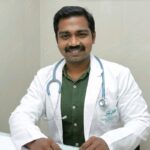
Affiliate (Clinical)
Dr. Kathir Stalin
Read Bio
Dr Kathir Stalin joined the Brisbane Shoulder Fellowship from March 2021 to April 2022, to gain his shoulder sub-speciality training under the guidance of Assoc. Prof Kenneth Cutbush and Prof (Adj) Ashish Gupta. Kathir worked on various clinical and biomechanical research projects and remains an active member of the Queensland Unit for Advanced Shoulder Research (QUASR). He is currently undertaking further fellowship studies with the Melbourne Shoulder Group.
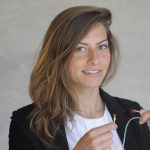
POST-DOC FELLOW
Maria Antico
Read Bio
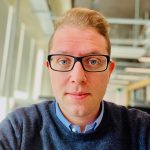
Investigating Team
Marco Branni
Read Bio
Marco was a PhD candidate in Biomedical Engineering at QUT and has since gained employment with medical start-up company Akunah at our clinical partner, Greenslopes Private Hospital where he continues his research. His research aims at understanding the contribution to support of cortical and trabecular bone structures using high-resolution images of human femurs, microstructural finite-element modelling, and bone loads caused by physical activity. Before his PhD, he completed his B.Eng. in Biomedical Engineering and M.Sc. in Biomechanics Engineering from the Polytechnic University of Turin (Italy). Marco commenced researching in orthopaedics during his visiting student program at the Université libre de Bruxelles and Ghent University Hospital (Belgium), where he was actively involved in biomechanics projects working with horses, sheep, and human knees specimens.
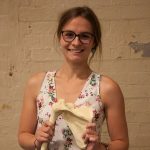
Investigating Team
Marine Launay
Read Bio
Marine has completed her Master of Biomedical Engineering from UTC in France and is currently working as a Research & Development Engineer in shoulder surgery. Her keen interest is to put her technical skills and knowledge to clinical applications.
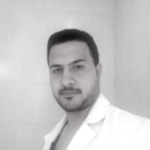
Affiliate (Clinical)
Dr. Mohammad Jomaa
Read Bio
Dr Mohammad Jomaa is a clinical fellow with the Brisbane Shoulder Fellowship working under the guidance of Assoc. Prof Kenneth Cutbush and Prof (Adj) Ashish Gupta at St Andrew’s War Memorial Hospital and Greenslopes Private Hospital, respectively. Jomaa is leading several clinical research projects at the Queensland Unit for Advanced Shoulder Research (QUASR) at QUT. Jomaa is using registry data from the Australian Joint Registry to assess reverse shoulder arthoplasty (RSA) in younger patients and the use of imaging techniques prior to RSA. He is also investigating muscle advancement and arthroscopic latarjet techniques to improve surgical outcomes.
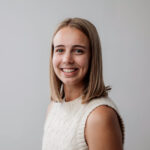
Centre Administration Officer
Maggie-May Hornigold
Read Bio
Maggie is currently in her final year of undergraduate studies at QUT, pursuing a dual major in Business Management and Medical Engineering. Whilst undertaking administrative duties, I am continuing my deep learning project on shoulder image segmentation, which is part of Program 1 for my work-integrated learning.
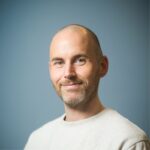
AFFILIATE (CLINICAL)
Dr. Mirek Karel
Read Bio
Dr. Mirek Karel is an orthopaedic surgeon dedicated to advancing shoulder surgery through expert training and innovation. After earning his medical degree from Erasmus University Rotterdam and completing further studies in healthcare innovation and leadership, he pursued a Shoulder & Elbow Fellowship at Epworth HealthCare in Melbourne. Passionate about excellence in patient care, Dr. Karel is committed to mastering advanced techniques in arthroscopy and arthroplasty. His fellowship offers hands-on experience, interdisciplinary collaboration, and research opportunities, equipping him to make a lasting impact in orthopaedic shoulder surgery.
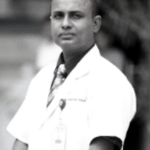
Affiliate (Clinical)
Dr. Nagmani Singh
Read Bio
Dr Mani Singh joined the Brisbane Shoulder Fellowship from January 2022 to July 2022, to gain his shoulder sub-speciality training under the guidance of Assoc. Prof Kenneth Cutbush and Prof (Adj) Ashish Gupta. Mani contributed to several clinical research projects and remains an active member of the Queensland Unit for Advanced Shoulder Research (QUASR).
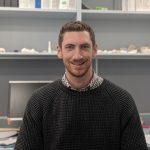
Investigating Team
Nicholas Green
Read Bio
Nicholas has been involved in the 3D medical space for the past 5 years, at the Royal Brisbane and Women’s Hospital and QUT. I have extensive design experience with CAD software, with interests in segmentation, designing patient specific guides, implants and biomechanics.
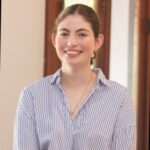
CENTRE ADMINISTRATION OFFICER
Phoebe Willmore
Read Bio
Phoebe is currently in her 3rd year of undergraduate studies at QUT, pursuing a dual major in Business and Psychology at QUT (Queensland University of Technology).
Phoebe’s enthusiasm for learning and genuine interest in the diverse research projects of our team make her a perfect fit for our collaborative environment.
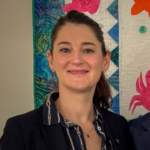
AFFILIATE (CLINICAL)
Dr. Rachel Price
Read Bio
Dr. Rachel Price is a vocationally registered orthopaedic surgeon with an MbChB from Otago and FRACS in Orthopaedic Surgery. She completed the NZ SET orthopaedic programme in 2023 and a shoulder & elbow fellowship in Wellington, NZ. Dr. Price is eager to advance her expertise in complex shoulder arthroplasty and advanced arthroscopic shoulder surgery. A strong advocate for women in surgery, she is an active member of LIONZ. Dr. Price looks forward to spending time in sunny Queensland with her family while advancing her skills.

Research Assistant
Raymond (Qiuhao) Zhuang
Read Bio
Project Title: Use of Deep Learning AI Models for Medical Imaging Diagnostics
Raymond is currently an undergraduate student at James Cook University (JCU), pursuing a Bachelor of Medicine, Bachelor of Surgery (MBBS). He has successfully completed the first three pre-clinical years of his six-year degree. His current project aims to enhance our understanding of the mechanisms and inner workings of artificial intelligence (AI) in the medical field, as well as explore its potential future applications.

Affiliate (Clinical)
Dr Ridzwan Namazie
Read Bio
Dr Ridzwan Namazie joined the Brisbane Shoulder Fellowship from January 2021 to August 2022, to gain his shoulder sub-speciality training under the guidance of Assoc. Prof Kenneth Cutbush and Prof (Adj) Ashish Gupta. Ridz worked on various clinical and biomechanical research projects and remains an active member of the Queensland Unit for Advanced Shoulder Research (QUASR). After completing his fellowship he went on to work as an orthopaedic surgeon based at Redcliffe Hospital and the Surgical, Treatment and Rehabilitation Service (STARS) unit at RBWH. Ridz also operates privately at Greenslopes Private Hospital.
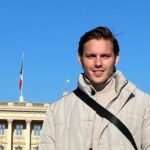
Affiliate (Clinical)
Dr. Roberto Pareyón Valero
Read Bio
Dr Roberto Pareyon is a clinical fellow with the Brisbane Shoulder Fellowship working under the guidance of Assoc. Prof Kenneth Cutbush (St Andrew’s War Memorial Hospital) and Prof (Adj) Ashish Gupta (Greenslopes Private Hospital). The fellowship provides comprehensive training in both arthroscopy and arthroplasty techniques. Roberto is undertaking several research projects with the Queensland Unit for Advanced Shoulder Research (QUASR). His research projects focus on improving clinical evaluation through new pre-surgical assessment techniques and improving surgical outcomes of for patients receiving arthroplasty and soft tissue repairs.
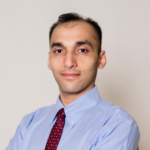
AFFILIATE (CLINICAL)
Dr. Rohit Sane
Read Bio
Dr. Rohit Sane is currently a Shoulder Surgery Fellow at the Australian Shoulder Research Institute in Brisbane, Queensland. He previously served as an Arthroscopy and Sports Medicine Fellow at Ortho-One Orthopaedic Specialty Centre in Coimbatore, India. Dr. Sane has extensive experience in orthopaedic surgery, arthroplasty, and trauma surgery, having held positions at DYPU School of Medicine and D.Y. Patil Hospital in Navi Mumbai. He holds a Master of Surgery in Orthopaedics from DY Patil University and a Doctor of Medicine in Pharmacology from MGM Institute of Health Sciences. Dr. Sane is licensed by the Australian Health Practitioner Regulation Agency (AHPRA).
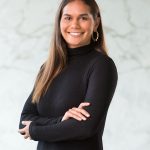
CENTRE ADMINISTRATION OFFICER
Sophia Power
Read Bio
Before joining the team Sophia worked as an Employee Services Assistant in Human Resources at the University Queensland. Prior to that Sophia worked as an Administration, Communications and Events Officer at the University of Melbourne, in both the Chancellery (Research and Enterprise) and the Indigenous Knowledge Institute.
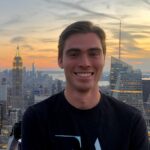
AFFILIATE MASTERS STUDENT
Stan Haanen
Read Bio
Stan embarked on an exciting internship journey at Queensland University of Technology, bringing his expertise from the Technical University of Eindhoven, where he is currently pursuing his master’s degree in Biomedical Engineering. Under the mentorship of A/Prof Saulo Martelli, Stan has joined the research community for joint biomechanics at QUT to further his studies in the field of joint biomechanics.
His research is focused on knee biomechanics. Using MRI and CT data combined with techniques such as finite element modelling (FEM), he aims to simulate the intricate biomechanical behaviour of healthy human knees. These simulations contribute to ongoing efforts to better understand and improve knee function.
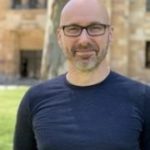
POST-DOC FELLOW
Dr Wolbert Van Den Hoorn
Read Bio
Wolly is Research Fellow at the ARC Training Centre for Joint Biomechanics, Queensland Unit for Advanced Shoulder Research, and part of the Movement Neuroscience and Injury Prevention groups within the School of Exercise & Nutrition Sciences at the Queensland University of Technology. His research aims to optimise shoulder rehabilitation after surgical interventions by analysing complex data sets that probe underpinnings of biomechanical and neuromotor changes in musculoskeletal disorders with shoulder issues.
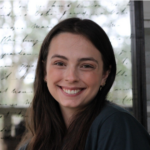
CENTRE ADMINISTRATION OFFICER
Zoe Engeman
Read Bio
Zoe recently graduated from QUT with a Bachelor of Business (Marketing). She joins us from the ARC Training Centre for Behavioural Insights for Technology Adoption (BITA) where she worked as a Research Communications and Events Assistant. Having also worked as a Library Officer for Redland City Council, and volunteering as a Marketing Coordinator for Lions Australia, Zoe is excited to contribute her acquired experience in marketing communications, event management and administration.

